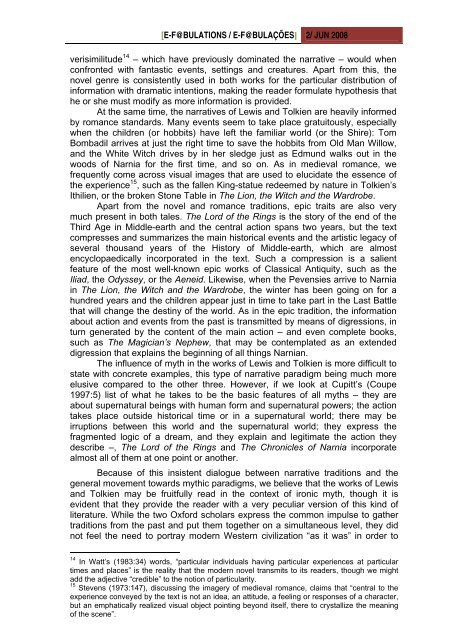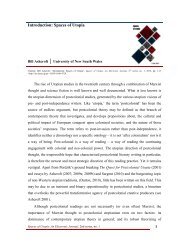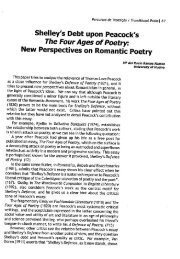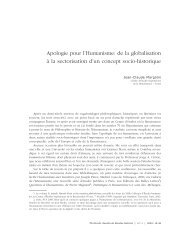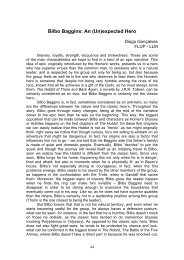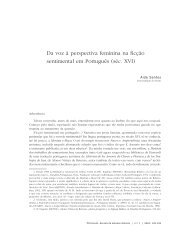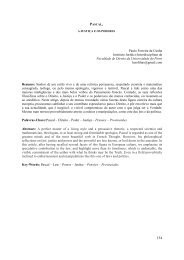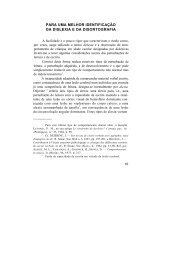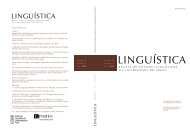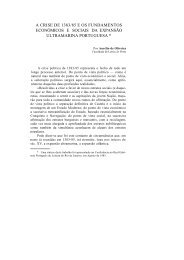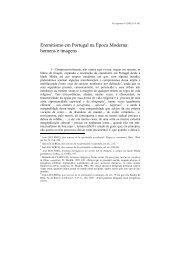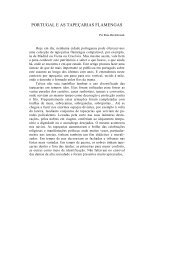e-f@bulações - Biblioteca Digital - Universidade do Porto
e-f@bulações - Biblioteca Digital - Universidade do Porto
e-f@bulações - Biblioteca Digital - Universidade do Porto
You also want an ePaper? Increase the reach of your titles
YUMPU automatically turns print PDFs into web optimized ePapers that Google loves.
[E-F@BULATIONS / E-F@BULAÇÕES] 2/ JUN 2008<br />
verisimilitude 14 – which have previously <strong>do</strong>minated the narrative – would when<br />
confronted with fantastic events, settings and creatures. Apart from this, the<br />
novel genre is consistently used in both works for the particular distribution of<br />
information with dramatic intentions, making the reader formulate hypothesis that<br />
he or she must modify as more information is provided.<br />
At the same time, the narratives of Lewis and Tolkien are heavily informed<br />
by romance standards. Many events seem to take place gratuitously, especially<br />
when the children (or hobbits) have left the familiar world (or the Shire): Tom<br />
Bombadil arrives at just the right time to save the hobbits from Old Man Willow,<br />
and the White Witch drives by in her sledge just as Edmund walks out in the<br />
woods of Narnia for the first time, and so on. As in medieval romance, we<br />
frequently come across visual images that are used to elucidate the essence of<br />
the experience 15 , such as the fallen King-statue redeemed by nature in Tolkien’s<br />
Ithilien, or the broken Stone Table in The Lion, the Witch and the Wardrobe.<br />
Apart from the novel and romance traditions, epic traits are also very<br />
much present in both tales. The Lord of the Rings is the story of the end of the<br />
Third Age in Middle-earth and the central action spans two years, but the text<br />
compresses and summarizes the main historical events and the artistic legacy of<br />
several thousand years of the History of Middle-earth, which are almost<br />
encyclopaedically incorporated in the text. Such a compression is a salient<br />
feature of the most well-known epic works of Classical Antiquity, such as the<br />
Iliad, the Odyssey, or the Aeneid. Likewise, when the Pevensies arrive to Narnia<br />
in The Lion, the Witch and the Wardrobe, the winter has been going on for a<br />
hundred years and the children appear just in time to take part in the Last Battle<br />
that will change the destiny of the world. As in the epic tradition, the information<br />
about action and events from the past is transmitted by means of digressions, in<br />
turn generated by the content of the main action – and even complete books,<br />
such as The Magician’s Nephew, that may be contemplated as an extended<br />
digression that explains the beginning of all things Narnian.<br />
The influence of myth in the works of Lewis and Tolkien is more difficult to<br />
state with concrete examples, this type of narrative paradigm being much more<br />
elusive compared to the other three. However, if we look at Cupitt’s (Coupe<br />
1997:5) list of what he takes to be the basic features of all myths – they are<br />
about supernatural beings with human form and supernatural powers; the action<br />
takes place outside historical time or in a supernatural world; there may be<br />
irruptions between this world and the supernatural world; they express the<br />
fragmented logic of a dream, and they explain and legitimate the action they<br />
describe –, The Lord of the Rings and The Chronicles of Narnia incorporate<br />
almost all of them at one point or another.<br />
Because of this insistent dialogue between narrative traditions and the<br />
general movement towards mythic paradigms, we believe that the works of Lewis<br />
and Tolkien may be fruitfully read in the context of ironic myth, though it is<br />
evident that they provide the reader with a very peculiar version of this kind of<br />
literature. While the two Oxford scholars express the common impulse to gather<br />
traditions from the past and put them together on a simultaneous level, they did<br />
not feel the need to portray modern Western civilization “as it was” in order to<br />
14 In Watt’s (1983:34) words, “particular individuals having particular experiences at particular<br />
times and places” is the reality that the modern novel transmits to its readers, though we might<br />
add the adjective “credible” to the notion of particularity.<br />
15 Stevens (1973:147), discussing the imagery of medieval romance, claims that “central to the<br />
experience conveyed by the text is not an idea, an attitude, a feeling or responses of a character,<br />
but an emphatically realized visual object pointing beyond itself, there to crystallize the meaning<br />
of the scene”.


